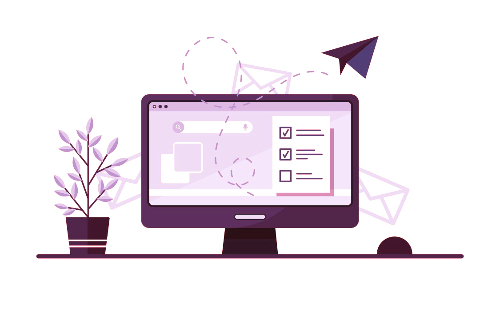5 Steps To Avoid Downtime During Email Migration
Email migration can be a daunting and complex process for any organization. The thought of migrating from one email platform to another can leave even the most seasoned IT professional feeling overwhelmed and anxious. One of the biggest concerns during the migration process is the possibility of system downtime, which can result in lost productivity, revenue, and even damage to your organization's reputation. Fortunately, there are steps you can take to ensure that your email migration is seamless and that downtime is minimized or avoided altogether.
In this blog post, we will outline five crucial steps that you can take to avoid downtime during email migration. From planning and preparation to testing and monitoring, we will provide you with a comprehensive guide that will help you to navigate the email migration process with confidence and ease. Whether you're planning to migrate your email system in the near future or you're in the midst of the process, this blog post is a must-read. So, let's dive in and learn how to avoid downtime during email migration!
1. Make Sure To Thoroughly Plan And Establish Clear Objectives:
Having a well-designed plan is essential prior to commencing the email migration process. This includes identifying your migration objectives, such as the timeframe, intended results, and specific checkpoints. Evaluate your present email system, which involves determining the number of users, mailbox capacities, and any existing problems.

By assessing the migration, you can establish its scope and foresee any obstacles. With a clear plan, everyone involved will have a shared understanding, leading to less confusion and downtime throughout the process.
2. Select The Appropriate Method Of Migration:
Different migration methods, such as cutover, staged, hybrid, and IMAP migration, are accessible. Each method has its own benefits and factors to consider based on your specific needs. Examine your business necessities, technological abilities, and the intricacy of your email environment to decide on the most appropriate migration method.
When undertaking significant migrations, it is advisable to consider a gradual migration strategy that breaks the process down into smaller stages. This technique can reduce the impact on users and minimize the possibility of downtime.
3. Evaluate The Process Of Migration:
Before implementing the migration process on a larger scale, it is recommended to conduct comprehensive testing in a controlled environment. You can create a test group comprising representative users and migrate their mailboxes to detect any potential issues or conflicts. By doing so, you can refine the migration process and tackle any difficulties before migrating all users' mailboxes.
To ensure a smooth transition and reduce the risk of unexpected downtime, it is important to test not just the technical aspects of migration, but also its impact on end-users. This includes
- email access.
- calendar synchronization and
- shared resources.
4. Inform and Instruct Users:
It is crucial to maintain transparent and prompt communication with your users during the email migration process. Notify them about the migration in advance, highlight its advantages, and explain how it may affect their email services. Additionally, furnish them with comprehensive guidelines on any necessary modifications, like adjusting email client settings or setting up mobile devices.

To avoid user errors or resistance to change that can lead to downtime, it is advisable to offer training sessions or documentation that will help users become familiar with the new email system and its new features. Keeping users informed and educated will reduce confusion.
5. Put Into Action A Plan For Backing Up And Restoring Data:
Despite meticulous planning and execution, unexpected problems may occur during email migration, resulting in downtime or loss of data. To mitigate the consequences of such events, it is crucial to establish a strong backup and recovery strategy. Be sure to regularly backup your email data prior to and throughout the migration procedure.
To ensure security and reliability, you may want to explore cloud-based backup options or partner with a reputable third-party provider. Establishing a thorough backup plan will allow for swift data recovery and the ability to revert to the previous email system during emergencies, minimizing downtime and maintaining business continuity.
In the end, avoiding downtime during an email migration is crucial for a successful transition. By following the five steps outlined in this post, you can mitigate any potential risks and ensure that your email system stays up and running. It's important to plan ahead, communicate clearly with your team, and monitor the migration process closely to catch any issues before they become major problems. With these strategies in place, you can make your email migration as smooth and seamless as possible, without disrupting your business operations.